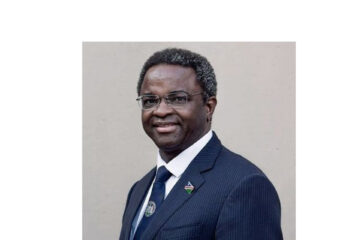Niël Terblanché
Tour operators and tourists alike have voiced their disappointment and frustration over the deteriorating condition of roads in Namibia’s Etosha National Park, the country’s top tourist destination.
A prominent tour operator, Rohl’s Tours and Safaris has taken a stand, announcing that it will cease operations within the park on 1 December. It cites severely degraded road conditions that cause extensive wear and tear on its vehicles.
This decision reflects a growing sentiment among tour operators who see the road conditions as not only impacting their businesses but also tarnishing Namibia’s reputation in the global tourism market.
“The people in control of the park have let us down as a nation, they have let tourism down. The roads are horrible; our cars and buses are breaking, falling apart,” Rohl’s stated in a recent social media post.
The company added that it would support lodges near Etosha and utilise their game vehicles, or alternatively, shift focus to private game reserves that maintain better road conditions and service standards.
Other operators voiced similar concerns, pointing specifically to the main roads that link Okaukuejo, Halali, and Namutoni camps.
These well-trafficked routes form the backbone of the park’s tourism circuit, offering access to key game viewing points that draw hundreds of thousands of visitors annually.
However, years of heavy use and neglect have left these roads heavily corrugated, riddled with potholes, and susceptible to drainage problems, particularly after rainfall.
Romeo Muyunda, spokesperson for the Ministry of Environment, Forestry, and Tourism, acknowledged the concerns from the tourism industry and stated that immediate and long-term plans were underway to address the issues.
“The Ministry of Environment, Forestry, and Tourism wishes to assure our tourists and the Namibian people at large that the condition of the Etosha National Park roads is being addressed as a matter of urgency,” he said in a statement earlier this week.
He stressed that the ministry had already deployed three graders to level the roughest sections of the roads between Halali, Namutoni, and Okaukuejo.
He indicated that within two weeks, this grading intervention should significantly improve road conditions for the short term.
Additionally, a major road upgrade project has been planned to convert the gravel stretches from Okaukuejo through to Halali, Namutoni, and King Nehale Gate into a low-seal volume, tarmacked road—a much-anticipated move expected to enhance road durability and accessibility for park visitors.
Muyunda pointed out that the western section of the park, from Okaukuejo to Galton Gate, had already seen improvements, with over 200 kilometres of road upgrades completed as of March 2024.
According to Muyunda, the ministry’s road infrastructure plan is a central part of ensuring that Namibia remains a leading destination for wildlife tourism.
“We firmly believe that quality road infrastructure is essential to ensure seamless travel for our visitors. Road infrastructure is crucial to the overall success of the tourism industry, and we are committed to enhancing it,” he said.
He recommended those visitors currently navigating Etosha’s gravel roads, use alternative routes through Gemsbokvlakte, Olifantsbad, and Aus to avoid the worst of the damaged areas.
“We regret and apologise for the inconvenience this situation has caused. We assure tourists and the general public that the situation is receiving our attention,” he said
Muyunda added that in the meantime, the road conditions will be viewed as a pressing challenge that will be addressed because the upkeep efforts are essential to support the country’s tourism industry effectively.




